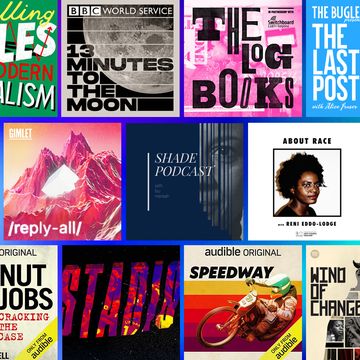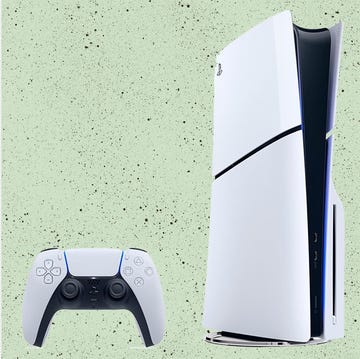The HomePod is Apple's first smart speaker—a decidedly upmarket new entry in a market dominated by countless offerings with Amazon Alexa and the Google Assistant on board. To set it apart from the numerous Amazon Echo and Google Home devices out there, Apple designed and developed the HomePod to deliver first and foremost an amazing audio experience.
Of course, with Siri on board, the HomePod can also do a whole lot more than play your favourite tunes in high quality. Apple's virtual assistant allows the speaker to perform a host of helpful tasks, answer questions, and control HomeKit-compatible products.
Setting it up couldn't be easier.
Available in white or space grey, the HomePod has beautiful design, highlighted by a sweet-looking, textured fabric and a sleek touch-sensitive surface with built-in LED lights on top. Measuring only 6.8 inches tall and 5.6 inches wide, the device is also surprisingly compact, giving users the ability to easily find a spot for it in any decor.
Setting up the speaker is an effortless affair just as you would expect from Apple — all you need to do is plug it into a wall outlet and bring your iPhone nearby. The HomePod will then appear on your phone's screen as a new device (just like AirPods) and take you through a few quick steps.
There are no passwords to enter or Wi-Fi credentials to worry about (the speaker will pull these from your phone), so you'll be up and jamming in about a minute. Also, because it's an Apple device, the HomePod won't require you to install and update apps like its Amazon and Google competitors.
Interacting Siri on the HomePod is just as intuitive and easy as on your smartphone. You can summon the virtual assistant via a "Hey Siri" command, or by long-pressing the center of the touch surface. The top of the speaker will glow when the virtual assistant is listening.
It sounds incredible.
The Apple HomePod is the best-sounding smart speaker money can buy today. It delivers a superbly refined sound signature with astonishing fidelity. The feat is compounded even further by the speaker's small footprint—the HomePod sounds unbelievable for a device of its size.
The Amazon Alexa-powered Sonos One and Google's own Home Max are widely considered to be the best-sounding smart speakers on the market. The Apple HomePod is superior to both, offering a more engaging and vibrant sonic experience, regardless of the style of music you choose to play. The Amazon Echo and Echo Plus speakers don't even belong in the conversation when it comes to audio quality.
Behind the amazing audio quality of the HomePod lies a combination of top-shelf hardware and cutting-edge engineering. The key components you need to know about include seven tweeters, one large high-excursion woofer, and six microphones that are positioned around the speaker.
An Apple A8 chip ensures that all the components we mentioned above work in tandem to deliver the best possible audio experience, regardless of the genre of music. It gives the HomePod spatial awareness, which allows it to deliver perfectly optimised audio, no matter its location. The speaker can literally detect if it has been placed near a wall, on a shelf, or in the middle of a table, and it'll adjust its audio performance accordingly.
The speaker also sounds consistently amazing, regardless of your position in the room. That's another thing made possible by its sophisticated hardware setup.
Future HomePod updates will give you the option to pair two speakers for an even more immersive audio experience. Multiroom audio will also arrive at a later date via AirPlay 2.
Siri is incredibly helpful in navigating through the tens of millions of songs that Apple Music has to offer. You can ask it to play any song, artist, album, or genre of music on the HomePod, then follow up with questions about the content you're listening to. It supports podcasts, too.
You can, of course, control the playback and the speaker's volume with voice. There's also the option to control the HomePod from its own touch surface or via your favorite iOS device.
But it's not perfect.
What makes the HomePod an imperfect product aren't the things it does, but rather the ones it doesn't, like a lack of full support for Spotify—a music streaming service that's currently significantly more popular than Apple Music.
If you're one of the 70 million paid Spotify subscribers and want a HomePod, you have two options. You can either leave the service behind for the similarly priced Apple Music, or play your Spotify playlists over Apple AirPlay. To be fair, you can still change songs and adjust volume with voice on Spotify. You can't, however, ask the HomePod to play music or go to a specific track, album, or artist.
Unlike devices with Amazon Alexa and the Google Assistant onboard, the HomePod is also strictly reserved for iPhone and iPad users. You can't use the smart speaker if you're an Android user, even if you wanted to.
And then there's Siri. Even though it made leaps of progress over the past couple of years, Apple's virtual assistant can't yet match the capabilities of Amazon Alexa and the Google Assistant. It can't set multiple timers, control as many connected appliances, or answer questions as seamlessly as its rivals.
Siri can't recognise voices for the time being, so it can't make a difference if it's you or someone else who's giving it commands. For example, this means that someone can make Siri read your iMessages and even send new ones without your knowledge. However, it's worth noting that this is only possible if you have enabled the feature and have your phone connected to the same Wi-Fi network.
The wrap-up:
The HomePod is the perfect smart speaker for the Apple users who are completely immersed into its ecosystem of hardware and services. It has a great design, the best audio quality of any smart speaker, and seamless intuitive controls.
The amazing audio quality alone makes the speaker worth your attention. Experiencing it in person will truly blow you away. The same goes for its ability to hear your commands from across the room at high volume.
Everyone else should consider carefully the HomePod's shortcomings before spending £319 on one. Do you have an iPhone? Are you willing to leave Spotify or other streaming services for Apple Music? Are you content with Siri's limited abilities to answer questions and set timers? Does Apple HomeKit match your smart home needs as a standard?
If the answer to all the above questions is yes, you'll love everything the HomePod has to offer. Otherwise, you should consider going for a Sonos One with Amazon Alexa or a Google Home Max.
Buy Apple HomePod (£319), apple.com

Stefan is the senior technology editor for Best Products, where he’s been covering the tech industry and testing the latest gadgets since 2015. He is an award-winning editor with more than a decade of experience reporting on and reviewing consumer tech products, especially smartphones, tablets, laptops, and audio gear like headphones, earbuds, speakers, and soundbars. Stefan was previously the U.S. editor for GSMArena.com. His writing can also be found in Popular Mechanics.














